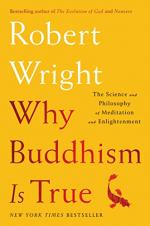
|
| Name: _________________________ | Period: ___________________ |
This test consists of 15 multiple choice questions and 5 short answer questions.
Multiple Choice Questions
1. The Nazi war criminal Hermann Goering bought a painting he thought was painted by what artist and later turned out to be a forgery?
(a) Vermeer.
(b) Rembrandt.
(c) Dali.
(d) Picasso.
2. Which of the three schools of meditation supports the idea that a critical distance of separation between the self and individual thoughts will give the conscious self more control?
(a) Western.
(b) Tibetan.
(c) Zen.
(d) Vipassana.
3. The author states that perception is what type of process?
(a) Mental.
(b) Active.
(c) Personal.
(d) Exhaustive.
4. Which philosopher is said to have had ideas that clearly reflect Buddhist ideals and that are reflected in modern psychology studies?
(a) Hume.
(b) Maslow.
(c) Kant.
(d) Descartes.
5. Within what situation should one practice the RAIN technique, according to the author?
(a) Public speaking.
(b) Dialogue.
(c) Meditation.
(d) Creating art.
6. What system within the body is responsible for rewards?
(a) The digestive system.
(b) The endocrine system.
(c) The dopamine system.
(d) The cardiovascular system.
7. The author states that people often impose beliefs and structure onto various what?
(a) Sounds.
(b) Smells.
(c) Religions.
(d) Sights.
8. The author states that he suspects that what word is dependent upon "a melange of feelings that you've come to associate with" this object?
(a) Cloud.
(b) Ocean.
(c) Butterfly.
(d) Biscuit.
9. What kind of teacher is Rodney, the man described by the author within one particular anecdote?
(a) A pottery teacher.
(b) A meditation teacher.
(c) A music teacher.
(d) A yoga teacher.
10. The author states that rather than seeing the world as hopeless and empty, enlightened and otherwise accomplished meditators see each individual object, person, and experience as empty in the sense that it does not have a preset what?
(a) Value.
(b) Connotation.
(c) Truth.
(d) Worth.
11. The author states that what elements are just tools to help the brain sort the importance of various thoughts?
(a) Feelings.
(b) Modules.
(c) Senses.
(d) Sounds.
12. The author states that what element only acts as a proxy between various feelings?
(a) Sight.
(b) Synapses.
(c) Intuition.
(d) Reason.
13. What animals are involved in the pellet experiment described by the author?
(a) Rabbits.
(b) Mice.
(c) Monkeys.
(d) Rats.
14. The author notes that generally, the thoughts that arise during meditation follow how many common themes?
(a) Six.
(b) Four.
(c) Three.
(d) Two.
15. The author states that "modules seem to have the ability to recruit" (130) what on behalf of their goals?
(a) Other modules.
(b) Reasons.
(c) Faith.
(d) Tenets of belief.
Short Answer Questions
1. The author states that he suspects that our recognition of familiar people, pets, and even objects within our lives is based on what?
2. When the author describes the colors of his hallucination during meditation, what colors does he name?
3. Who is said to have remarked that our faculties of reason are controlled by passions, otherwise known as feelings, according to the author?
4. The author states, “It’s kind of amazing, when you think about it, that the world would be set up this way: that the path you embark on to relieve yourself of suffering would, if pursued assiduously, lead you to become not just a happier person but a person with a clearer view of" (263) what two types of reality?
5. When it feels like the rational self makes a decision, what is really happening, according to Kurzban?
|
This section contains 581 words (approx. 2 pages at 300 words per page) |

|




